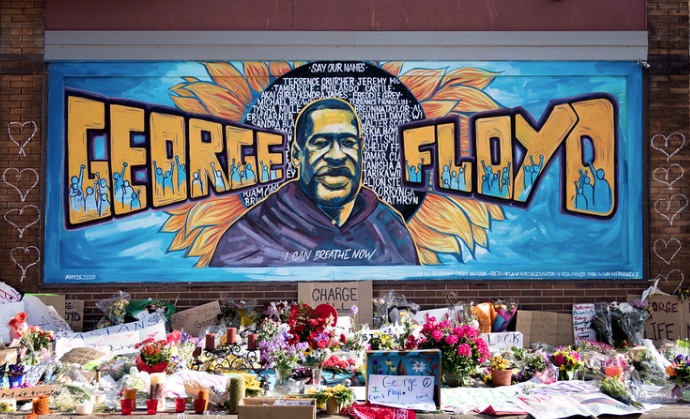Using Virtual Reality to Pre-Visualize Your Designs.
by Todd F. Edwards, Marko Kojicki and Soren Saunders
Ever since I was a little kid I dreamt of technology to replicate the holodeck from Star Trek. I have had fantasies about being able to transport myself to other places and explore things that I might not otherwise be able to do. The creativity and imagination of creating worlds for plays to reside in was a driving force for my becoming a scenic designer. While we are still a long way away from the holodeck, virtual reality has moved from the fringes into the mainstream. The quality, cost and availability of VR technology has reached a point where it is a viable gaming platform offering escape and enjoyment, and a viable research platform allowing researchers to experience scenarios or practice procedures. VR is now a viable platform for social gatherings, exercise and personal meditation. Architects use VR to see their creations before construction begins… so how can we use this in the theater and live performance industry?
Our goals were multifaceted- (1) to gain an understanding of the technology and how to use it, (2) explore how VR could be used as a tool for designers to pre-visualize their work and (3) explore ways to use VR for the creation and delivery of content and as a device that could enhance the live performance experience through audience members and/or performers integrating it into the overall experience. What we set out to do was not ground-breaking nor extremely exciting, but was in many ways a utilitarian use of this technology. The goal of this project was to determine if the use of VR would aid designers in their process of visual storytelling. We wanted to see if the inclusion of VR in the designer’s toolbox would help them work through the complex questions that arise throughout the design process as well as provide a more immersive way to share their designs with the other members of the design team, directors, choreographers, producers and even help those realizing the design to formulate and work through questions before any actual construction or installation began. While it felt like a natural fit for the scenic designer, we wanted to find ways that other designers including lighting, media and even costume and sound designers could use VR in their design process. What we discovered is that while it is a natural extension of the scenic designer, especially one who currently works within a digital framework, VR provides the LD and MD opportunities to see how their content works with the physical environment and the opportunity to pre-cue a production without being in the venue. VR allows costume designers to see how their costumes “live in” the world and provide sound designers the opportunity to experiment with speaker placement and how those choices impact the visual aesthetic of the design and audience site lines.
Through the assistance of the St.Olaf College CURI (Collaborative Undergraduate and Inquiry) program I was able to acquire the funds to obtain the necessary VR equipment as well as bring on two talented student research assistants Soren Saunders and Marko Kojicki. We then spent the summer learning the technology, exploring options and gathering data from surveys sent to designers, directors, performers and producers in the fields of theater, opera, music, dance and live performance. These people polled were asked questions about their process, how (if) they pre-visualize their work now, what software and technology they use and if they had experience with VR or would be interested and open to exploring VR technology. We then reviewed several options for equipment and software concluding those that we best felt provided the highest quality, best ease of use, cost to acquire, etc… It was our goal to find solutions that could be implemented by large professional organizations, freelance artists, smaller venues, educational institutions and community theaters.
Our original plan called for the purchase of an HTC Vive, Oculus Quest and a basic phone based headset that I had purchased several years ago for less than $20.00 on Amazon. My researchers and I were to be together for this process where we would evaluate the equipment and the software. Due to Covid 19 our summer program was unable to happen as planned and Marko and Soren returned to their homes. In order for this project to work we acquired two more Oculus Quest systems. The new plan was for me to have access to the Vive, Quest and the original phone based unit and my researchers to have the other two Quest units to conduct our experiments on. This plan was further compromised when Marko’s unit never arrived (he is from Serbia) due to international shipping being delayed in customs. As of this writing, his unit is still missing; somewhere between the US and Serbia. In order to explore as many options as possible in both hardware and software, Marko acquired a phone based unit locally and conducted all of our tests on that platform.
Headsets Used
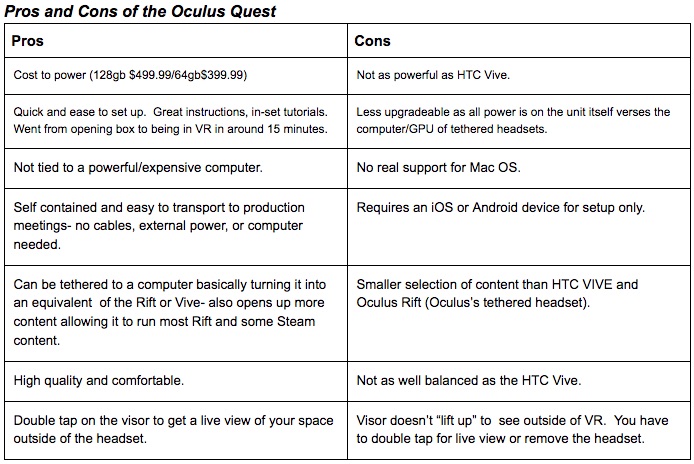
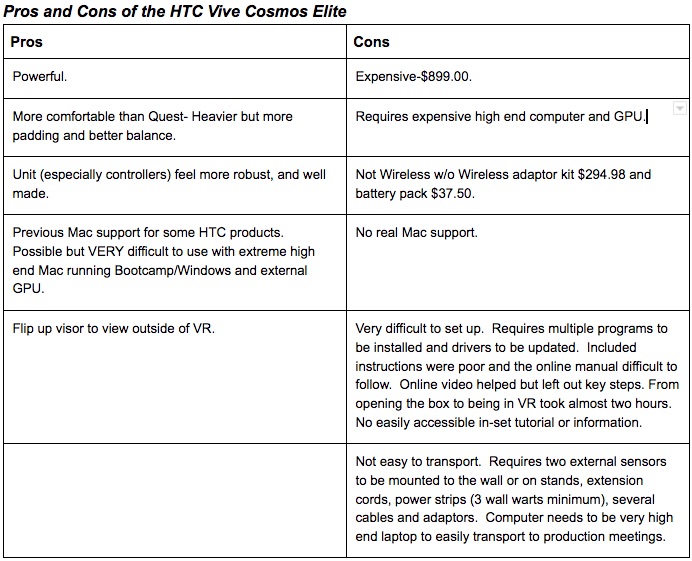
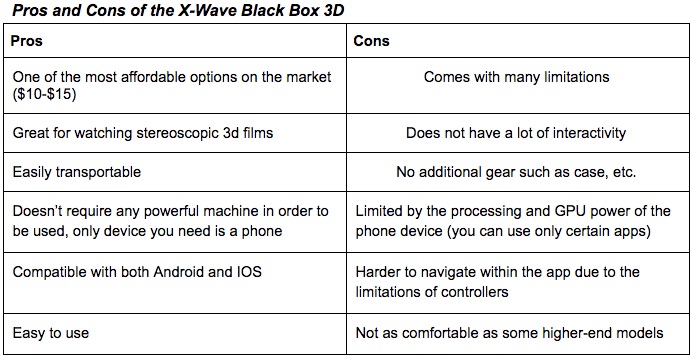
Software and Plug-ins Evaluated
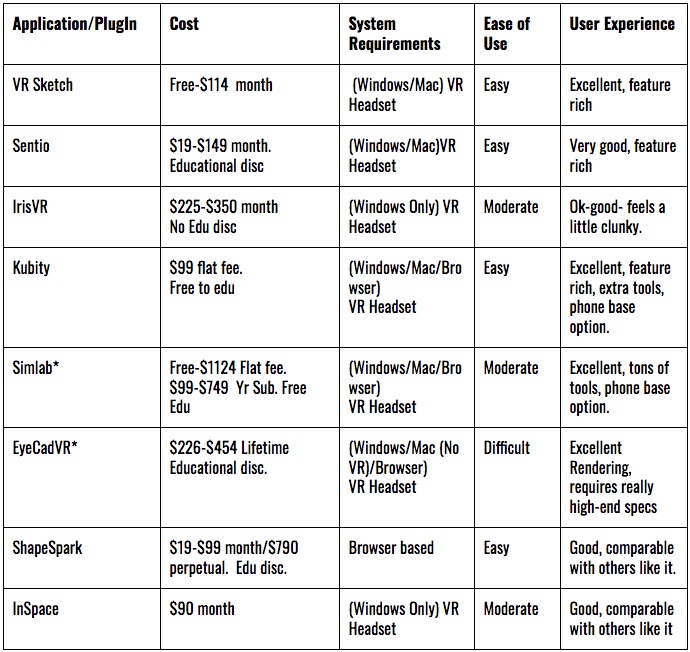
*These applications are more than just plug-ins for VR. They offer advanced rendering and modeling capabilities in addition to VR integration.
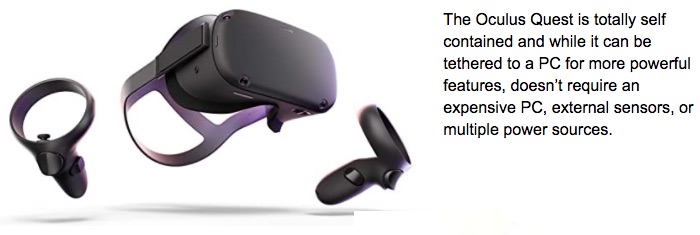
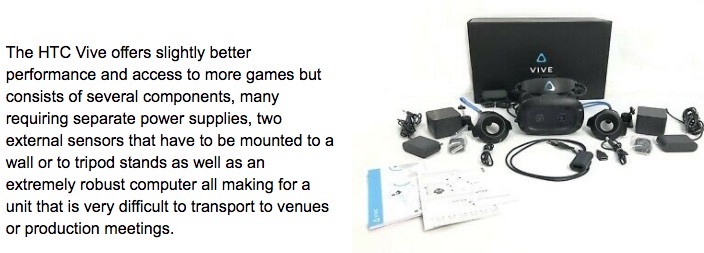
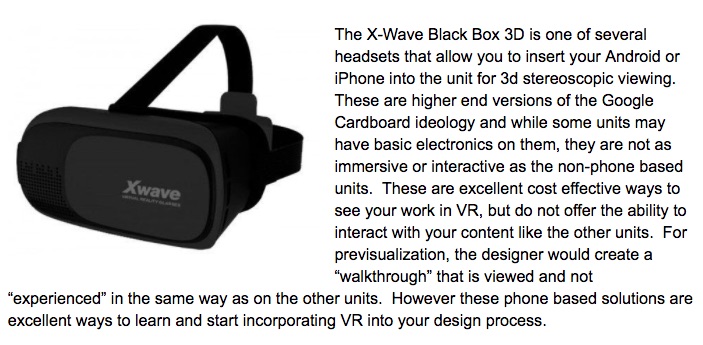
Images from Within the Headsets
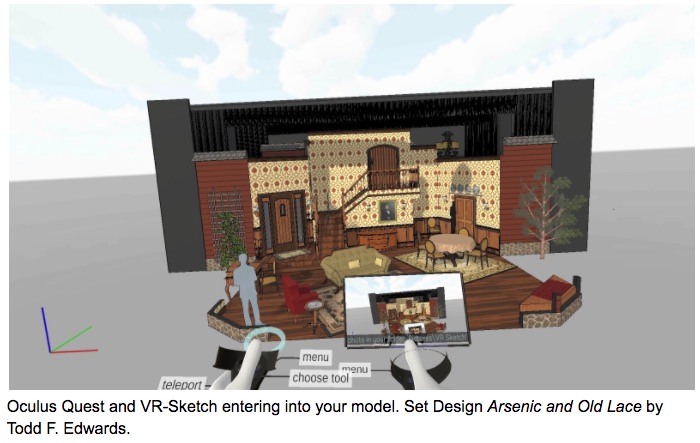
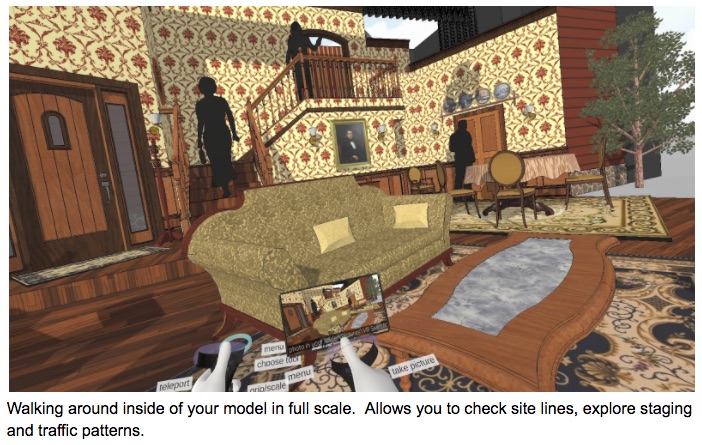
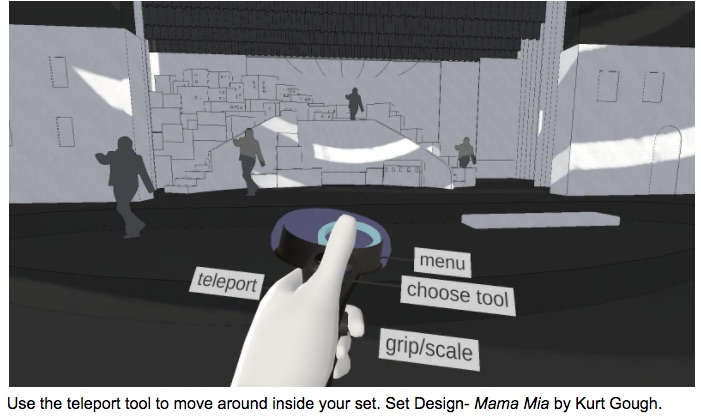
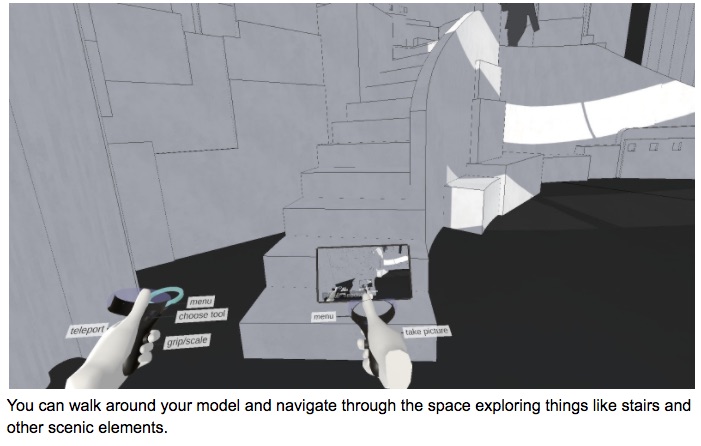
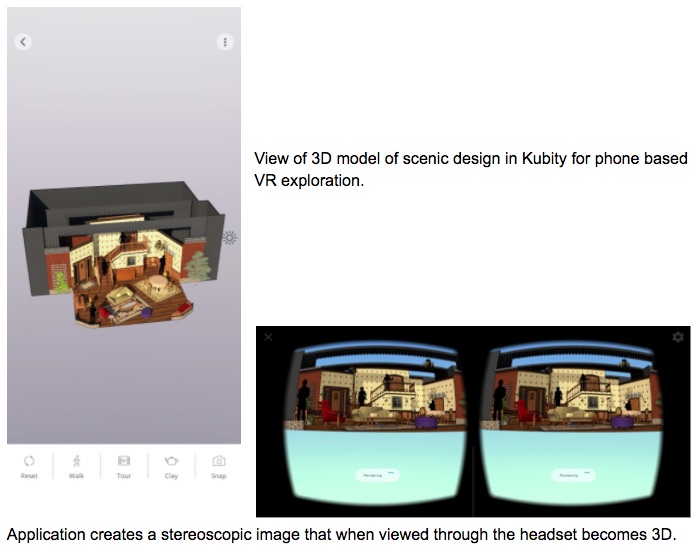
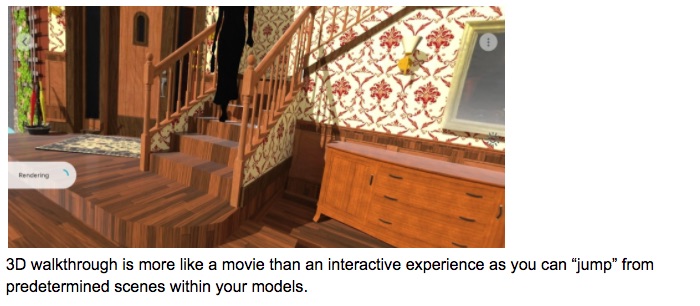
In conclusion we set out to see if using VR for pre-visualizing designs for live performance was worth the cost of the equipment and the learning curve associated with its use. If your current workflow includes digital 3D models then this is a logical extension of your process. The immersive experience is exciting and really helps answer many of the questions that pop up through the design’s evolution. While not as immersive and interactive, the phone based solutions make this type of technology accessible by most everyone. Considering that the total cost of this solution didn’t exceed $15.00, it is definitely the most affordable option when it comes to VR pre visualization. Headset cost was $13.00 dollars and the Kubity phone app was free for educators and students or a one time $99.00 fee for non educators. You can use the free version of SketchUp (with certain limitations) to design 3D models and then import them inside the app. Furthermore, you don’t need an expensive, powerful machine for this solution - everything goes through your phone device, which should be mid-range to high-end in order to run without complications or lag. If you want to take this to the next level the Oculus Quest and Sketch VR are an ideal solution. Both the headset and the plugins are compatible with Mac and PC versions of SketchUp (not the case with all of the applications- some work only with the Windows version of SketchUp), and the system requirements are moderately low. The Oculus Quest is around $400.00 and VR Sketch is free to students and educators or as low as $6.00 a month for non educational access. The HTC Vive is a very nice option, but not worth the extra cost nor frustrations of added components and difficult setup. One thing we want to point out is a phenomenon known as VR sickness. This can make for a very unpleasant experience distracting you and taking your energies away from the actual design process. VR sickness is a form of motion sickness that some suffer while using VR equipment. There are things that can ease this like Dramamine or motion/morning sickness bands like Sea-Band or PSI Bands.
Epilogue… What is next? We are continuing our research into the use of VR in live performance and will be using Lidar scanning and photogrammetry to create more realistic and accurate models of performance venues and exploring how we can use VR to create content for production use and for directly contributing to the audience experience. [ ]
Links to resources
-
SketchUp-https://www.sketchup.com
-
Oculus-https://www.oculus.com
-
Sidequest-https://sidequestvr.com
-
VR Sketch-https://vrsketch.eu
-
SentioVR-https://www.sentiovr.com
-
IrisVR-https://irisvr.com
-
Kubity-https://pro.kubity.com
-
SimLab-https://www.simlab-soft.com
-
EyeCADVR (Amazing rendering, extremely powerful computer to run)-https://eyecadvr.com
-
ShapesSpark (Web based)-https://www.shapespark.com
-
InSpace-https://www.inspacexr.com
-
PSI Bands-https://www.psibands.com
Link to an online presentation we made of our findings. https://drive.google.com/file/d/1bR75aXlcIk7_5pjAofbMllA9ejk36298/view?usp=sharing
Todd Edwards is an Asistant Professor, Designer and Technical Director in the Theater Department at St. Olaf College. Marko Kojicki and Soren Saunders are senior students at St. Olaf.

